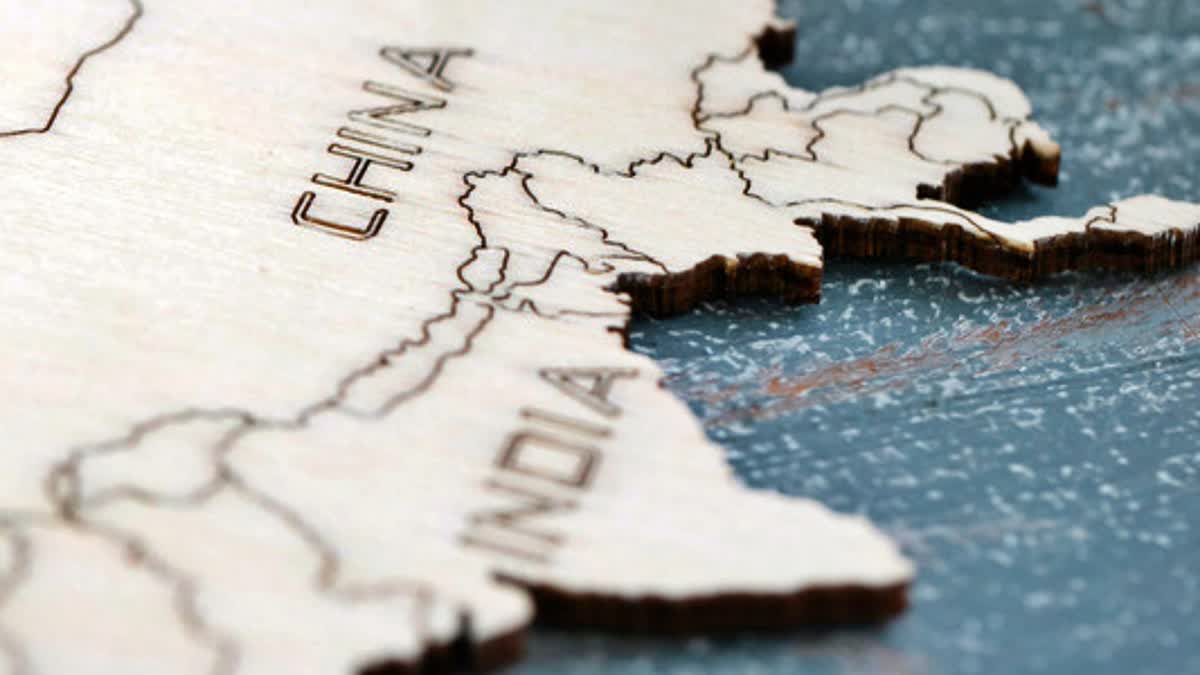Hyderabad: India was the leading economic power of the world from the 1st year of the first millennium till 1750 A.D with 32 per cent share of world's GDP in the first 1000 years and 28 per cent to 24 per cent in the second millennium. India and China were two of the world's wealthiest countries until the eighteenth century.
Geography-The geographical location was favourable for the Indian subcontinent; it was an important point in the trade networks. India and China accounted for more than 50 percent of the world's GDP till the 18th Century. For most of human history, China has been one of the wealthiest countries in the world. When Marco Polo visited the Yuan dynasty in the late 13th century, he was impressed by its military strength, social structure, and above all its obscene wealth.
Per capita performance- In 1987, the GDP (Nominal) of both countries was almost equal; now in 2023, China's GDP is 5.46 times higher than India. China crossed the $1 trillion mark in 1998, while India crossed nine years later in 2007 on an exchange to rate basis. Both countries have been neck-to-neck in per capita terms till 1990. The per capita rank of China and India were at 63rd and 147th, respectively in 1990, but today they are at 75th and 139th in per capita terms.
How liberalisation aided China- During the regime of Deng Xiao Ping China began to liberalise and so its economic growth started increasing. From then onwards for about two decades China never looked back. China's nearly $ 5 trillion economy surpassed Japan to become the world's second largest economy for the three months ended June, 2010.
Growth driving sectors- The major sectors and industries driven growth for China include the services sector, manufacturing, and technology. China is also one of the world's largest exporters and importers in the world. It denotes that China importing raw materials from other countries but converting in to high value goods to enhance its bottom line.
How China outpaced India- While economic reforms might explain some of the differences, China outpaced India because (1) China adopted single child norm and family planning more effectively and thereby provide food, clothing and shelter to its growing population (2) China could educate its population better and thereby improving the human resources quality (3)the economy was privatized faster (4) the labour market underwent much deeper reforms(5) the economy was opened up to international trade and foreign direct investment on a massive scale.
India's USD 5 trillion economy push- India is expected to reach to USD 5 trillion economy and the third largest in the next 3 years as per our Indian economic institutes. However, India is likely to reach to reach 5 trillion economy by market exchange rates either by 2027, aided by the demographic advantage and pace of financial sector development. It will solidify India's position as a major economic power, attract more foreign investment, and create new opportunities for millions of people.
A look at India's GDP composition- At the end of March 2023 sector-wise GDP composition of India is as follows: Agriculture 18.5 percent, Industry 28.5 and Services 53 percent. Whereas in 2017 this composition was at 15.5, 23, 61.50 percent respectively. Decline in proportion of GDP contributed by services is a matter concern. Efforts must be made to improve the proportion of Industry and services so as to create employment and increase the per capita income in India.
China's surge in EVs- The Sector-wise GDP composition of China in 2023 is identical compared to 2017 but Agriculture sector declined by one percent, whereas Industry and Services sectors improved marginally. Today, China's productivity is nearly double that of India. While 45 percent of Indian workers are still in the highly unproductive agriculture sector, China has graduated even from simple, labour-intensive manufacturing to emerge, for example, as a dominant force in global car markets, especially in electric vehicles.
China's economic growth drivers- Private investment and exports are the main drivers of economic growth in China; but the Chinese government has also emphasized domestic consumption. China is the world's largest manufacturing economy and exporter of goods like Electrical Machinery and Equipment, Machinery including Computers, Furniture, Bedding, Lighting, Signs & Prefabricated Buildings where as our exports remained with Refined Petroleum, Diamonds, Packaged Medicaments and Jewellery and Rice.
Read more



